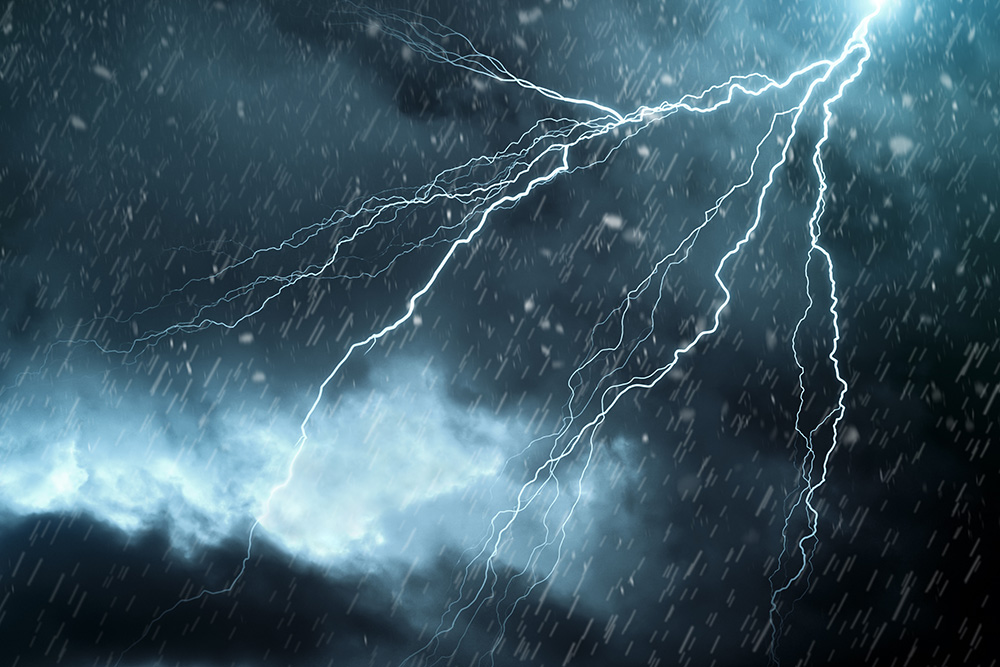Lightning is a powerful force of nature, with approximately 40 million bolts striking the United States each year, according to the CDC.
Experiencing a direct lightning strike is extremely rare; injuries from indirect lightning discharge methods are more common. The CDC estimates that only 10 percent of people struck by lightning are killed.
Understanding how lightning causes injuries and who is most at risk can help ensure your safety during thunderstorms.
Does Thunder Mean Lightning?
The adage “when thunder roars, go indoors” is a critical safety guideline. Thunder indicates that lightning is close enough to pose a threat, and seeking shelter immediately is essential.
Is Thunder Dangerous?
While thunder itself is not dangerous, it serves as a reminder of the presence of lightning, which can pose significant risks.
Thunder and lightning are inseparable phenomena — one cannot occur without the other.
How Lightning Causes Injuries
In addition to a direct lightning strike, lightning can cause harm through various mechanisms, including the following:
- Conduction: Lightning travels through metal surfaces, such as fences or plumbing, potentially injuring those in contact with these objects.
- Side Flash: When lightning jumps from an object struck to a nearby person, such as someone standing under a tree.
- Ground Current: Lightning strikes the ground, and the electrical current spreads out, potentially injuring people in the vicinity.
- Streamers: These are secondary electrical discharges that occur near the main lightning channel, which can also cause injuries.
Lightning Strike Symptoms
A direct lightning strike is a life-threatening event that requires immediate emergency intervention. The symptoms of such an injury are severe and can include the following:
- Cardiac Arrest: This is the most critical symptom and can be fatal without prompt medical attention.
- Unconsciousness: Loss of consciousness is common due to the electrical shock.
- Confusion: Disorientation or memory loss may occur.
- Chest Pain: Lightning can cause chest pain and discomfort.
- Heartbeat Irregularities: The electrical shock may disrupt normal heart rhythms.
- Memory Loss: Temporary or permanent memory impairment is possible.
- Superficial Burns: Lightning often leaves distinctive burn patterns on the skin.
- Musculoskeletal Injuries: The force of the strike can cause bones to break.
- Burst Eardrum: The loud sound and pressure can rupture the eardrums.
In some cases, a person’s clothes may be torn due to the intense heat and energy of the strike. Neurological damage is also common among survivors, leading to long-term issues such as memory problems, chronic pain, or difficulty with coordination.
What to Do if Struck by Lightning
Anyone who experiences a direct lightning strike must receive immediate medical attention. The severity of the injuries and potential for lasting complications make swift intervention critical for survival and recovery.
People at Risk for Lightning Strikes
Certain professions, activities, and demographics increase the likelihood of being struck by lightning.
Males are four times as likely as females to be struck, possibly due to higher participation in outdoor activities. People who work or spend time outdoors, such as farmers, ranchers, and construction workers, are at a heightened risk.
People who enjoy sporting activities, including those who fish, boat, or engage in water-related recreation, are also particularly vulnerable.
The highest risk factors for being injured by a lightning strike include the following:
- Males: Men are statistically more likely to be struck by lightning.
- Outdoor Workers and Enthusiasts: Farmers, ranchers, construction workers, and anyone participating in outdoor sports or recreation.
- Water-Related Activities: People who fish, boat, or spend time near bodies of water.
Thunderstorm Safety Tips
Being prepared and knowing how to stay safe are essential if you find yourself outdoors during a thunderstorm. Here are some key safety tips to keep in mind:
Before the Storm
- Stay informed: Monitor weather updates and warnings through local news or weather apps.
- Secure outdoor items: Move or secure loose objects like patio furniture, which can become projectiles in strong winds.
- Create an emergency kit: Include essentials like flashlights, batteries, a first-aid kit, and non-perishable food.
During the Storm
- Seek shelter: Move indoors immediately and avoid open areas, tall trees, and metal structures.
- Avoid electrical equipment: Stay away from corded phones, computers, and plumbing, as these can conduct electricity.
- Stay low: If you’re caught outside with no shelter, crouch low to the ground to minimize your risk of being struck by lightning.
After the Storm
- Wait for the all-clear: Avoid going outside until the storm has completely passed.
- Check for hazards: Watch out for downed power lines, flooding, or debris.
- Inspect your property: Look for damage to your home or vehicles and address it promptly.
State Urgent Care is committed to keeping our community healthy through exceptional medical services and a patient-centered approach. With a focus on compassionate care, advanced diagnostic tools, and ongoing patient support, we strive to meet the diverse needs of our patients while fostering long-term health and well-being.

